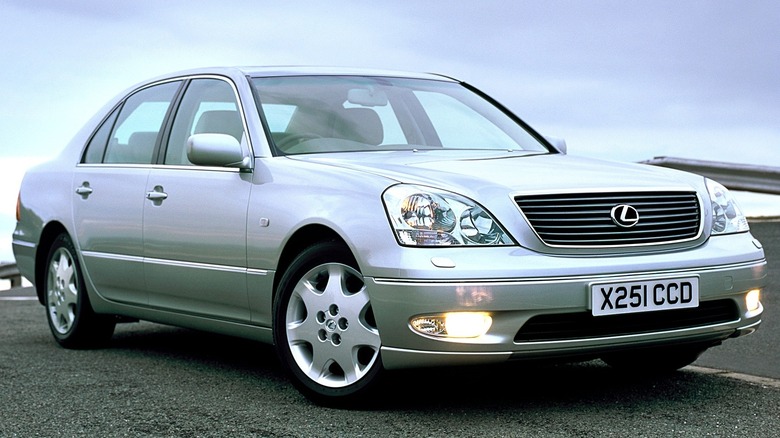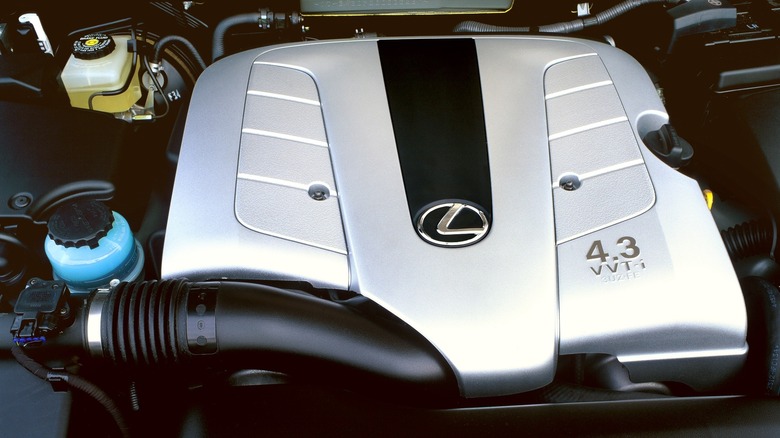What Engine Powered The Lexus LS 430, And How Much HP Did It Have?
The Lexus LS 430 resulted from parent company Toyota's relentless pursuit of perfection, a battle cry that began with the introduction of the almighty first-generation Lexus LS 400 in 1989. After sticking with a familiar body design in the second-gen Lexus LS, the third-gen Lexus LS 430 that went on sale from 2000 to 2003 featured more rounded styling cues, shorter front and rear overhangs, and a sterling 52%-to-48% front and rear weight distribution. It received a styling and equipment update for the 2004 model year, which continued until the final production model in 2006.
The LS 430 debuted with a new engine under the hood, a larger-displacement 4.3-liter 3UZ-FE V8 with 290 horsepower, compared with 256 hp for the Lexus/Toyota 1UZ-FE V8 engine from the first- and second-gen Lexus LS. And the all-new, larger displacement V8 had VVT-i variable valve timing and could put out 320 pound-feet of torque, about 60 more than before.
Lexus LS 430 models sold from 2000 to 2003 came with a five-speed Super ECT electronically controlled transmission with AI shift algorithms that avoided unnecessary upshifts or downshifts going uphill or downhill. Torque-activated powertrain control delivered smoother, more precise shifts. The redesign sold from 2004 to 2006 introduced an all-new six-speed automatic transmission.
Lexus LS 430: Continuing the Lexus tradition of quality
The LS 430 solidified the Lexus name in build quality, refinement, craftsmanship, and reliability. It scored the top overall rating in the J.D. Power and Associates Initial Quality Study in the large premium car segment from its debut to its final year of production. Tight construction tolerances, new welding methods, and ultra-precise build standards gave it the impression of being "built like a tank."
The LS 430 garnered positive consumer reviews, gaining praise for its quiet, smooth ride, especially when fitted with the optional non-linear H infinity control air suspension. It was also among the safest cars on the road with its combination of standard active and passive safety features, like front and rear crumple zones, anti-lock brakes, electronic brake force distribution, traction control, stability control, and brake assist.And there were also the LS 430's slippery aerodynamics. Lexus boasted that it had the lowest drag coefficient (Cd) of any luxury car, slicing the air at Cd 0.25 (Cd 0.26 with the standard suspension).
Combined with the new V8 engine, the LS 430 could rocket from zero to 60 mph in 6.7 seconds and reach a 155 mph top speed. Helping the cause was what Lexus called "ACIS," or Acoustic Control Induction System, a unique feature of the new V8 engine. The system helped improve engine torque over the entire rpm range by opening or closing two intake air-control valves, which changed the length of the intake manifold in three stages.

